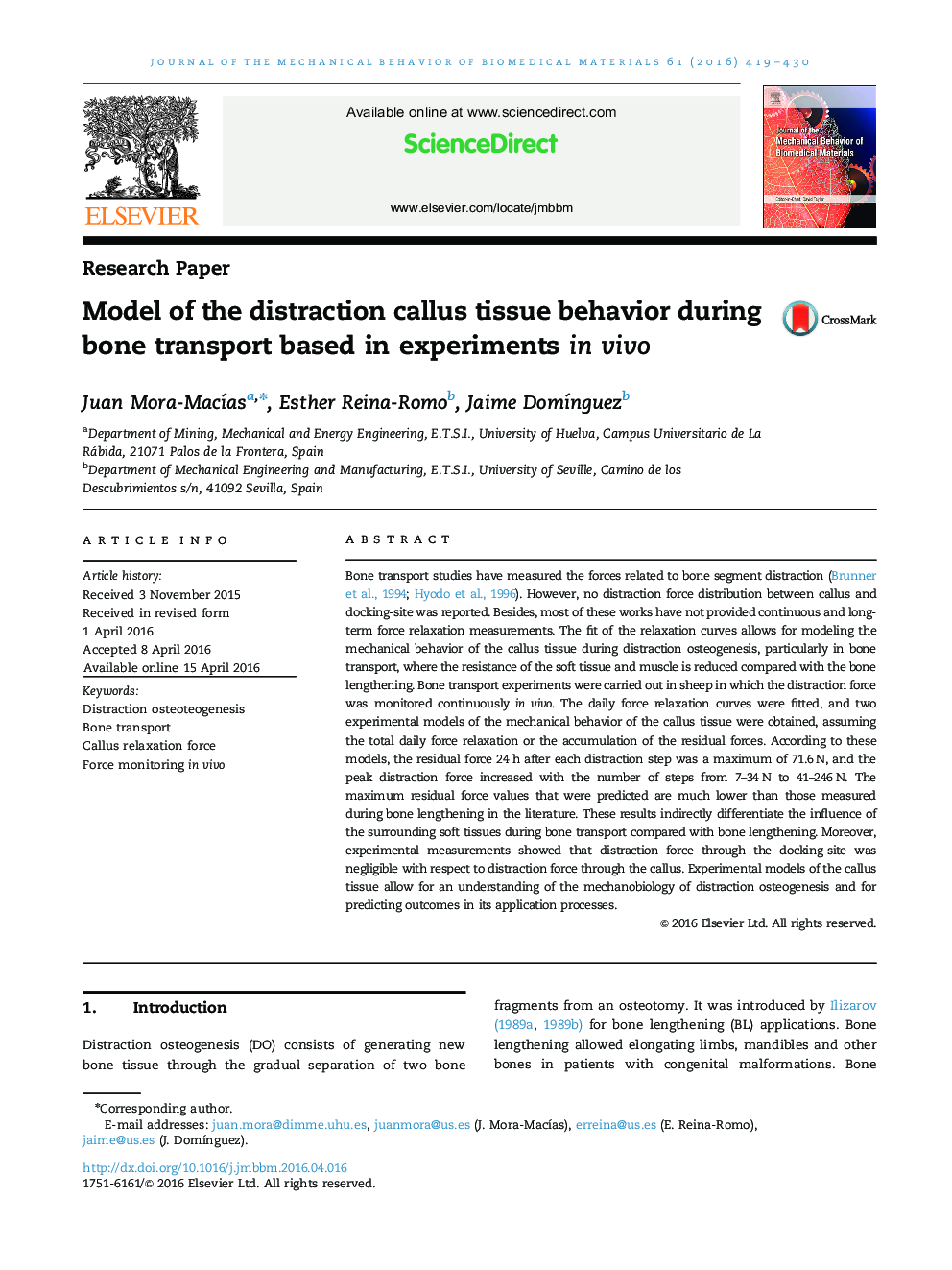| Article ID | Journal | Published Year | Pages | File Type |
|---|---|---|---|---|
| 7207915 | Journal of the Mechanical Behavior of Biomedical Materials | 2016 | 12 Pages |
Abstract
Bone transport studies have measured the forces related to bone segment distraction (Brunner et al., 1994; Hyodo et al., 1996). However, no distraction force distribution between callus and docking-site was reported. Besides, most of these works have not provided continuous and long-term force relaxation measurements. The fit of the relaxation curves allows for modeling the mechanical behavior of the callus tissue during distraction osteogenesis, particularly in bone transport, where the resistance of the soft tissue and muscle is reduced compared with the bone lengthening. Bone transport experiments were carried out in sheep in which the distraction force was monitored continuously in vivo. The daily force relaxation curves were fitted, and two experimental models of the mechanical behavior of the callus tissue were obtained, assuming the total daily force relaxation or the accumulation of the residual forces. According to these models, the residual force 24Â h after each distraction step was a maximum of 71.6Â N, and the peak distraction force increased with the number of steps from 7-34Â N to 41-246Â N. The maximum residual force values that were predicted are much lower than those measured during bone lengthening in the literature. These results indirectly differentiate the influence of the surrounding soft tissues during bone transport compared with bone lengthening. Moreover, experimental measurements showed that distraction force through the docking-site was negligible with respect to distraction force through the callus. Experimental models of the callus tissue allow for an understanding of the mechanobiology of distraction osteogenesis and for predicting outcomes in its application processes.
Keywords
Related Topics
Physical Sciences and Engineering
Engineering
Biomedical Engineering
Authors
Juan Mora-MacÃas, Esther Reina-Romo, Jaime DomÃnguez,
